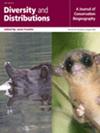Spatially-Differentiated Regulation of Alien Species Can Be Improved Using Species Distribution Models: Psidium guajava in South Africa as a Case Study
Abstract
Aim
Biological invasions can generate conflicts between those who benefit from alien taxa and those threatened by subsequent invasions. Ideally, regulations should be proportionate to the level of threat—regulations perceived as unwarranted are likely to result in conflicts. We explore options for spatially differentiated regulation of alien species using Psidium guajava as a case study.
Location
South Africa.
Methods
Using various sources, we mapped sites across the country where guava is cultivated, naturalised, and has formed invasive monocultures. We identified areas under threat of invasions using species distribution models (SDMs).
Results
Our models predict that guava invasions are likely along South Africa's east coast. However, the niche dynamic indices indicate a larger cultivated niche than a naturalised niche, suggesting that there are areas in South Africa suitable for guava cultivation where invasions are unlikely. Our SDMs suggest that almost half the area regulated at the provincial level does not require regulation; this spatial over-regulation could be reduced to ~20% if regulations were at the next lower political level.
Conclusions
We recommend that current regulation of guava be aligned to the level of threat. For example, guava is currently regulated in the North-West province, but we found no records of naturalisation and SDMs suggest the climate is not suitable. However, we note a trade-off between the resolution of the regulations and enforceability. We argue that: at lower levels there will be dispersal of fruits between unregulated and regulated areas as the distances between areas will be short; the SDMs produced here are not of sufficient resolution to accurately predict local conditions; and very localised variations in regulations will be complicated to enforce. Although SDMs can easily be over-interpreted, we believe that their judicious use provides a valuable method of interpreting field information in a form useful for regulators so conflicts can be avoided.


 求助内容:
求助内容: 应助结果提醒方式:
应助结果提醒方式:


